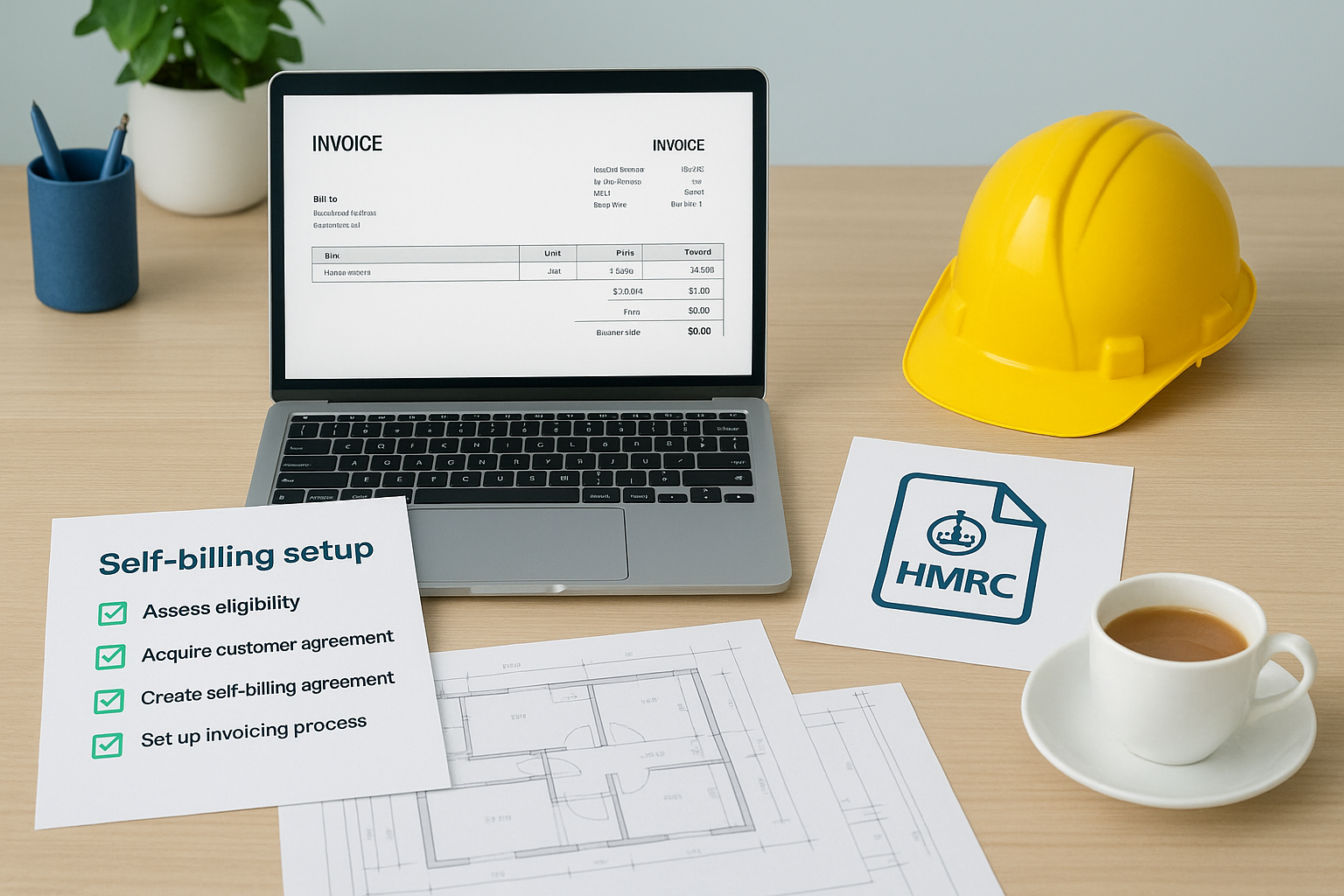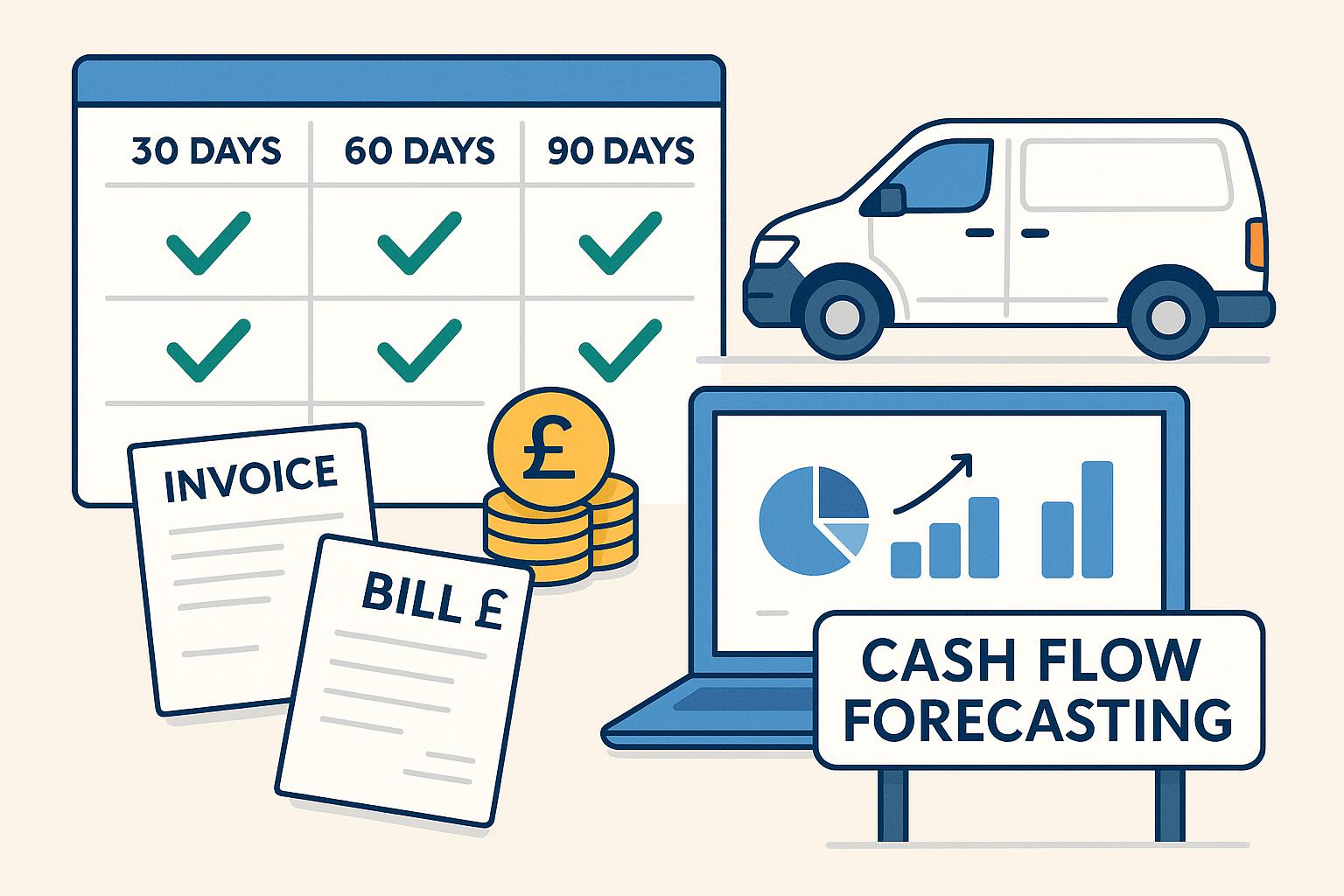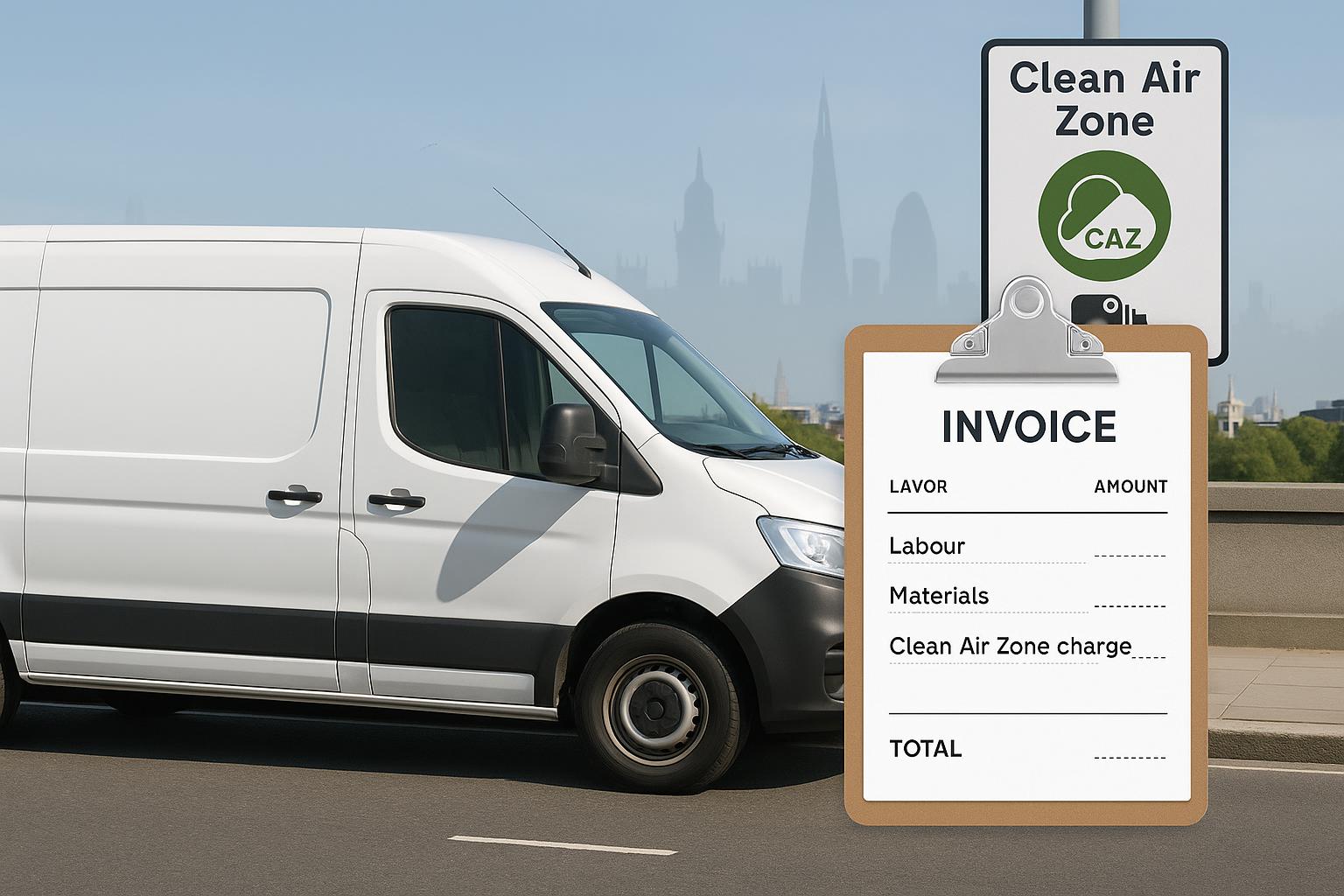
Set up VAT self-billing for CIS subcontractors: Xero and QuickBooks step-by-step
Set up VAT self-billing for CIS subcontractors: Xero and QuickBooks step-by-step
Category: Finance & Tax Niche: VAT self-billing, CIS, Xero, QuickBooks, automation
Contents
- Quick answer
- What self-billing is (in plain English)
- Before you start: HMRC rules you must follow
- Xero setup: self-billing with CIS deductions
- QuickBooks Online setup: self-billing with CIS deductions
- Automation options (ApprovalMax, Zapier)
- Monthly reconciliation and record-keeping
- Common mistakes to avoid
- What are people saying on Reddit?
- FAQs
Quick answer
- Self-billing means you, the contractor, raise the VAT invoice on behalf of a subcontractor and send it to them. You must have a signed self-billing agreement in place first. CIS still applies to labour.
- Neither Xero nor QuickBooks has a one-click "make self-billed VAT invoice" button. You record the bill/expense with CIS, generate the CIS Payment and Deduction Statement from the software, and provide the self-billed VAT invoice document to the subcontractor (often created from a template and attached to the bill).
- Always split labour and materials. CIS applies only to labour. Keep the self-billing agreement on file and renew it annually or when VAT status changes.
What self-billing is (in plain English)
Self-billing is a VAT arrangement where the customer (you) issues the supplier’s invoice. It’s common in construction because it reduces back-and-forth and lets you control the wording and VAT treatment. It does not replace CIS. You still verify subcontractors, apply CIS to labour if required, give them monthly CIS statements, and file your CIS return.
Handy links:
- HMRC overview: VAT: self-billing arrangements
- Detailed rules: VAT Notice 700/62: Self-billing
- CIS guide (for contractors and subcontractors): CIS 340
Before you start: HMRC rules you must follow
- Get a signed self-billing agreement from each subcontractor before you issue any self-billed invoice. Keep a register and set reminders to renew (usually every 12 months).
- Check the subcontractor’s VAT status and number, and keep it up to date. If they cancel VAT registration, you must stop showing VAT.
- Your self-billed invoice must show the supplier’s name, address and VAT number and include wording like: "Self-billed by [your company]. The VAT shown is your output tax."
- CIS is separate: you still need to verify subcontractors, calculate CIS on labour, and give a CIS Payment and Deduction Statement within 14 days of the tax month end.
Authoritative sources:
- Self-billing rules and invoice wording: VAT Notice 700/62
- CIS statements and timing: see HMRC’s CIS guidance and monthly statement rules in CIS 340
Xero setup: self-billing with CIS deductions
- Turn on CIS in Xero
- Accounting Advanced Financial settings turn on CIS and select Contractor (or Both). Xero creates CIS accounts and reports.
- Add subcontractors and rates
- Create contacts for each subcontractor. Record UTR, CIS rate, and VAT number. Upload the signed self-billing agreement to the contact files.
- Enter the self-billed costs as a bill
- Business Bills New bill select subcontractor. Use CIS Labour Expense for labour lines and CIS Materials for materials. Choose correct VAT codes. Xero calculates CIS automatically based on the contact’s rate.
- Provide documents
- Create the self-billed VAT invoice using your template and attach it to the bill. Generate the CIS Payment and Deduction Statement from Xero when you prepare your monthly CIS return.
- File CIS
- Use Xero’s CIS return to file to HMRC and email statements to subcontractors.
Useful help: Xero’s CIS feature overview and community guides on self-billing mechanics. If you need a walkthrough for DRC on the sales side, see our article on the construction reverse charge.
QuickBooks Online setup: self-billing with CIS deductions
- Turn on CIS in QBO
- Settings Account and settings Advanced enable CIS. QuickBooks creates CIS accounts and a CIS area under Taxes.
- Add and verify subcontractors
- Add each subcontractor as a Supplier and verify them with HMRC via QBO. Store VAT number and upload the self-billing agreement.
- Enter the self-billed costs as a bill or expense
- New Bill (or Expense) enter labour and materials on separate lines. QBO auto-calculates CIS on labour from the supplier’s rate. Save and pay.
- Provide documents
- Produce the self-billed VAT invoice from your template and attach it to the bill. Send the CIS Payment and Deduction Statement from QBO (Reports CIS statements) or from Taxes CIS.
- File CIS
- Use the CIS return area and CIS300 report.
Resources:
- QuickBooks CIS setup and reports: QBO CIS guide and run CIS reports
Automation options (ApprovalMax, Zapier)
- ApprovalMax: Create a simple workflow that auto-approves self-billed invoices under a set limit and routes higher values to a manager. Map supplier Tag = "Self-bill" as a condition.
- Zapier: Build a form → draft invoice flow. For example, a Google Form the site lead completes creates a draft Xero or QBO invoice with prefix SB-. On approval, email the PDF to the subcontractor and log the data to a CIS tracker sheet.
Tooling references: ApprovalMax guidance on CIS bill creation and deductions; Zapier for multi-step approvals and file attachments.
Monthly reconciliation and record-keeping
- Keep a monthly folder that includes: all self-billed invoices, CIS statements, HMRC submission receipt, and a reconciliation sheet that ties invoices, payments, VAT and CIS.
- Check VAT shown on the self-billed invoice equals the subcontractor’s VAT status. Check CIS deduction equals the payroll/CIS ledger movement.
- Retention policy: Keep records for at least 6 years. If using SharePoint/Google Drive, use a naming convention like SB_[invoice][supplier][date].
Common mistakes to avoid
- Missing self-billing agreement or out‑of‑date VAT number.
- Putting VAT on a non‑VAT subcontractor’s invoice.
- Not splitting labour and materials, causing the wrong CIS deduction.
- Forgetting to issue the monthly CIS statement within 14 days of the tax month end.
- Assuming software automatically creates the self‑billed VAT invoice document. It does not; you need a template.
What are people saying on Reddit?
- We didn’t find strong, recent UK threads specifically about VAT self‑billing for construction in Xero/QBO. General finance threads suggest building simple automations and keeping a clean audit trail. If you’ve spotted a good UK thread, drop it in the comments and we’ll review and add it here.
FAQs
Do I need the subcontractor’s permission to self‑bill?
Yes. HMRC requires a self‑billing agreement with each supplier before you start. See VAT Notice 700/62.
Can I show VAT if the subcontractor isn’t VAT registered?
No. If they’re not VAT registered, do not show VAT. Update your records if their VAT status changes.
Does CIS still apply when I self‑bill?
Yes. Self‑billing is about who issues the VAT invoice. CIS still applies to labour. You must verify subcontractors, apply the correct deduction and issue monthly CIS statements.
Can I automate creating the self‑billed invoice?
Partly. Xero and QBO don’t create a self‑billed VAT invoice document by default. Many firms use a Word/Google Docs template generated via Zapier or a document app, then attach it to the bill.
How long do I need to keep self‑billed invoices and CIS records?
Keep VAT and CIS records for at least 6 years in the UK. Ensure you can produce agreements, invoices, statements and reconciliation on request.
Call to action: Want to slash training times and increase revenue per Engineer? Join our Waitlist - https://trainar.ai/waitlist
Share this article
Category
Financial management and tax guidance for trades
Ready to Transform Your Business?
Join the TrainAR beta and start using AR training in your business.
Join Beta ProgramStay Updated
Get weekly insights and new articles delivered to your inbox.
Comments (0)
Leave a Comment
No comments yet
Be the first to share your thoughts on this article!
Related Articles

Cash flow forecasting for trades in Xero or QuickBooks: simple setup, open banking tips and a one‑page template
Cash flow forecasting for trades in Xero or QuickBooks: simple setup, open banking tips and a one‑page template Category: Finance & Tax Niche: ca...

Offer finance to customers: interest‑free plans vs Kanda, Vendigo and Novuna explained
Offer finance to customers: interest‑free plans vs Kanda, Vendigo and Novuna explained Category: Finance & Tax • Niche: customer finance, interest...

How to add ULEZ or Clean Air Zone charges to your invoice (VAT and reverse charge explained)
Category: Finance & Tax • Niche: VAT, ULEZ/CAZ, invoicing, domestic reverse charge, job costing, Xero, QuickBooks Contents {#contents} - Quick an...

Cash flow forecasting for trades in Xero or QuickBooks: simple setup, open banking tips and a one‑page template
Cash flow forecasting for trades in Xero or QuickBooks: simple setup, open banking tips and a one‑page template Category: Finance & Tax Niche: ca...

Offer finance to customers: interest‑free plans vs Kanda, Vendigo and Novuna explained
Offer finance to customers: interest‑free plans vs Kanda, Vendigo and Novuna explained Category: Finance & Tax • Niche: customer finance, interest...

How to add ULEZ or Clean Air Zone charges to your invoice (VAT and reverse charge explained)
Category: Finance & Tax • Niche: VAT, ULEZ/CAZ, invoicing, domestic reverse charge, job costing, Xero, QuickBooks Contents {#contents} - Quick an...